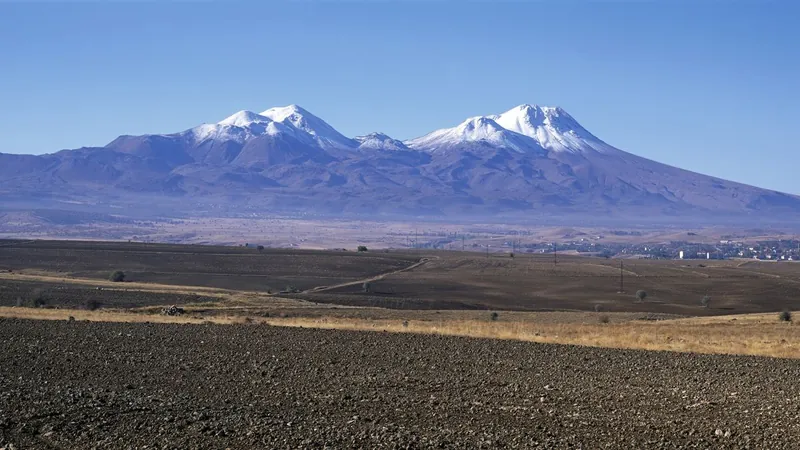
Mars Was Once a Life-Friendly Planet - Now, Scientists Discover Why It Became Uninhabitable!
2024-10-08
Author: Arjun
NASA's Curiosity rover is currently on an exciting mission at Gale Crater on Mars, uncovering intriguing details about the transformation of the Red Planet from a potential cradle of life to the barren, inhospitable world we see today. For years, evidence has suggested that ancient Mars hosted vast amounts of liquid water, raising hopes of past life.
Despite the frigid and hostile surface conditions today, NASA's robotic explorers continue to gather significant data about the planet's history. With each analysis, they inch closer to understanding whether life ever truly flourished on Mars.
Recent findings from Curiosity's onboard instruments have focused on the isotopic composition of carbon-rich minerals, known as carbonates, discovered in Gale Crater. These insights reveal critical clues about the planet's climatic evolution. A lead researcher, David Burtt from NASA's Goddard Space Flight Center, explained, "The isotope values of these carbonates point toward extreme evaporation levels, indicating that these minerals likely formed when the climate could support only brief periods of liquid water."
Published in the Proceedings of the National Academy of Sciences, the study suggests that while the samples collected do not support evidence of a thriving surface biosphere, they do not completely eliminate the possibility of microbial life existing either underground or during earlier climatic conditions prior to the carbonate's formation.
Isotopes are variations of elements that differ in mass. Through the process of evaporation, lighter isotopes of carbon and oxygen escaped into the atmosphere, leaving behind heavier versions that accumulated in carbonate formations. This isotopic analysis sheds light on the climatic changes Mars underwent, changing the narrative of its environmental past.
The researchers proposed two potential scenarios for how the carbonates emerged at Gale. The first suggests a cycle of wet and dry periods that shaped the region's environment. Alternatively, the carbonates may have formed in extremely salty water under cold, ice-promoting conditions. Jennifer Stern, a co-author of the study, highlighted, "These two formation mechanisms indicate different climate regimes, which may present varying scenarios for habitability. Wet-dry cycles suggest fluctuations between more and less hospitable environments, while the cold, salty conditions indicate a less hospitable environment where water is largely trapped in ice and chemically unsuitable for life."
As Curiosity continues its exploration, researchers are eager to unravel the secrets buried beneath Mars's surface, fueling the quest to understand whether this red world ever held life and what it could mean for our search for habitable planets beyond Earth. Could there still be hidden biospheres waiting to be discovered? The adventure continues!

 Brasil (PT)
Brasil (PT)
 Canada (EN)
Canada (EN)
 Chile (ES)
Chile (ES)
 España (ES)
España (ES)
 France (FR)
France (FR)
 Hong Kong (EN)
Hong Kong (EN)
 Italia (IT)
Italia (IT)
 日本 (JA)
日本 (JA)
 Magyarország (HU)
Magyarország (HU)
 Norge (NO)
Norge (NO)
 Polska (PL)
Polska (PL)
 Schweiz (DE)
Schweiz (DE)
 Singapore (EN)
Singapore (EN)
 Sverige (SV)
Sverige (SV)
 Suomi (FI)
Suomi (FI)
 Türkiye (TR)
Türkiye (TR)